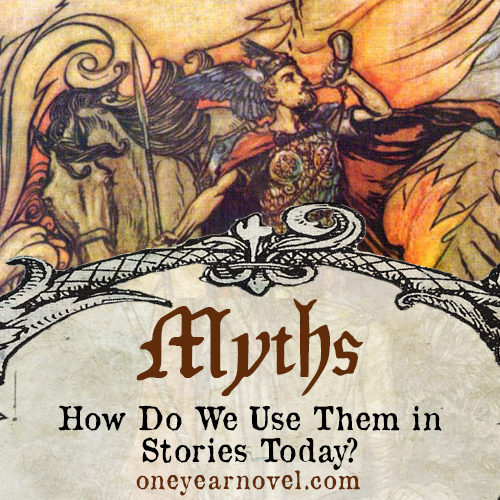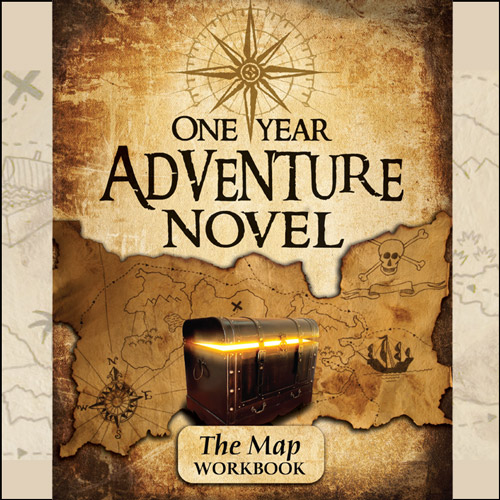Myths: How Do We Use Them in Stories Today?
 By Justin Ferguson, Guest Contributor
By Justin Ferguson, Guest Contributor
In my last post, I discussed the role of mythology and the particular power it has in storytelling. Here I would like to examine a couple ways we can incorporate myths into our own stories.
Some writers make subtle, brief allusions to myths that are intended to add a “bonus” layer of meaning for those who will notice. But two more significant ways myths can be used are in retellings and original work.
Retellings
The most obvious way of incorporating myth into your story is through direct retelling. Retellings are popular right now, especially with fairytales, but in mythology we have another deep well of material, yet to be fully recognized. My favorite example of a myth retold is Till We Have Faces, by C.S. Lewis. While less known than his Narnia books or his Space Trilogy, this was Lewis’s personal favorite among his novels.
Till We Have Faces is Lewis’s retelling of the Greek myth of Cupid (or Eros) and Psyche. In the original tale, a king has three daughters, the youngest of whom is so beautiful that people worship her as a goddess. This angers Venus (Aphrodite), who sends her son Cupid to exact revenge. When Cupid sees Psyche, however, he falls in love with her. The king, meanwhile, is told by an oracle that he must expect no mortal son-in-law for Psyche. He obeys the oracle’s instructions, chaining Psyche to a mountain and abandoning her. Cupid frees her and makes her his wife, but only visits her at night when it is too dark to see his face.
When Psyche’s sisters learn that she has become the wife of a god, they are jealous and convince her that her husband must be lying about his identity — why else would he hide his face from her? And so one night, while Cupid is asleep, Psyche lights a lamp so that she can see his face. Cupid wakes up, catches her in the act, and flees. Psyche is left to the vengeful will of her mother-in-law, who forces her to perform impossible tasks to win back her husband.
Lewis first encountered this myth as a young adult and it held his imagination for decades before he finally wrote his retelling. In Till We Have Faces he reworks this story to explore issues apparent to him in the original. But in retelling the myth, he highlights these themes in a particularly Christian light: what is the nature of love, both human and divine? And why does the work of the divine often seem so horribly unjust?
Since I was twelve I have wanted to retell the fall of Atlantis, which is essentially another version of the Flood myth: a paradise home is created for a race of semi-divine beings, who are esteemed the world over for their wisdom and beauty. But over time they become corrupt, seeking to conquer and enslave the world, and so Poseidon, who fathered their race, destroys them in a cataclysm which drags Atlantis into the ocean’s depths. This story has resonated with me since childhood. Its unique portrayal of the “paradise lost” motif strikes a particularly strong chord with me, and I am drawn by the mystery of a father choosing to eradicate his own children for the sake of others. One day I hope to do this myth justice.
What is one of your favorite myths, and does it raise questions you find yourself drawn to? How might you rework this story to further explore these themes?
Original Work
Another, more common way myths are used is as source material for your own original story. Modern fantasy, as a genre, is almost entirely founded on this.
Take Middle-earth as a prime example: Tolkien drew extensively on myths as source material for his stories. The gods of Greek mythology influenced the creation of his Valar; and from Atlantis he drew inspiration for the island of Númenor. His novel The Children of Húrin, which takes place thousands of years before the events in The Lord of the Rings, draws from both the Norse legend of Sigurd the dragon-slayer and the Finnish tale of Kulervo.
J.K. Rowling pulled freely from various mythologies and folklores, particularly Greek, to construct the world of Harry Potter. Her setting is populated with such traditional creatures as dragons, unicorns, centaurs, and phoenixes; but she also includes more obscure species like the kappa, grindylow, basilisk, and three-headed dog. Her use of names like Minerva, Argus, Remus, etc. are further homage to mythology.
Robert Jordan was inspired by both Tolkien and Eastern mythology for his Wheel of Time series — most notably the idea that history is cyclical. The TV show Avatar: The Last Airbender’s world of spirits, avatars, and martial arts-based magic is another story that pulls from Eastern myth and folklore.
Nearly all the archetypes we’re familiar with in fantasy find their roots in various mythologies: the bearded wizard, the prophecy, the exiled king, the ancient civilization, the broken sword reforged, the dragon-slayer, etc. By tracing the genealogy of a trope back through time, we can often rediscover what makes it work, and thus use it all the more effectively ourselves.
Do you use mythology as a source for ideas and characters? Do you consider writing an original work inspired by myths to be more or less compelling than embarking on a retelling?
Drawing from these sources is, in practice, little different than drawing from other inspirations in your writing. We are constantly recycling material to reuse in stories, and stockpiling the plots and characters we encounter to remix in a fresh way. That the old stories have stuck with us through the centuries is an indicator of the weight they carry. They continue to inspire, and provide a rich well for new generations of storytellers.
…
Justin has been a student with The One Year Adventure Novel for several years and has been writing since he was a kid. He desires his stories to evoke wonder and longing in readers like his favorites do in him. He is a Texan who lived for many years in Canada and is now in Kansas. He’s in the process of collecting as many mythologies as are available. He also enjoys attempting to play the ocarina from time to time.



